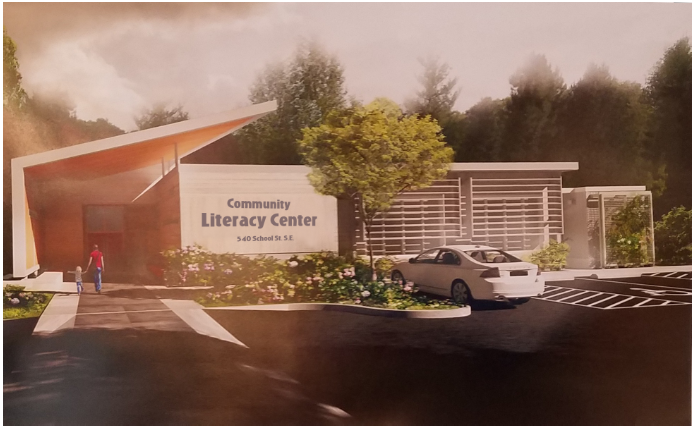The Need for Literacy Support
In the United States, one out of every five adults, or approximately 43 million people, fall into the illiterate or functionally illiterate category. In children, the problem is acute. Nearly two-thirds of American fourth-graders read below grade level, a statistic that doesn’t improve by the time they graduate from high school.
REACH is located within the jurisdiction of North Thurston Public Schools. Within NTPS, 2,500 K-12 students are homeless, and nearly 70% qualify for free and reduced lunches. Studies have found that children from low socio-economic status (SES) households and communities develop academic skills, including reading, slower than children from higher SES groups. Hispanic, African American and mixed-race people are disproportionately represented among those struggling with illiteracy.
Lydia Hawk Elementary School, which is nearest to where the literacy center will be located, is one of the most diverse in Thurston County, with 63% of students identifying as African American, Hispanic, Asian, Native American or mixed race. Among the student body, 66% are considered low income and just 42% meet state English Language Arts standards. Students from Lydia Hawk were among the first to enroll in the REACH program in 2018 and 2019.
With so many homeless and economically disadvantaged students, the district has to tap into other sources to supply their needs.
“Kids are falling through the cracks in school. Whether they’re navigating food insecurity or housing insecurity or not having funds to purchase school clothes, these tend to be the kids that have delayed literacy.” ~ Jennifer Williamson Forster, Executive Director of the South Sound Reading Foundation
The COVID-19 Pandemic’s Impact on Literacy
In 2021 the U.S. Department of Education’s Office of Civil Rights released a report titled “Education in a Pandemic: The Disparate Impacts of COVID-19 on America’s Students.” Some of its key findings:
- Emerging evidence shows that the pandemic has negatively affected academic growth, widening pre-existing disparities. In core subjects like math and reading, there are worrisome signs that in some grades students might be falling even further behind pre-pandemic expectations.
- COVID-19 appears to have deepened the impact of disparities in access and opportunity facing many students of color in public schools, including technological and other barriers that make it harder to stay engaged in virtual classrooms.
In North Thurston Public Schools, educators are seeing similar impacts among their students.
“We’re worried. There’s the usual summer reading slump, but we’re anticipating that it’s going to take several years to make up the loss that occurred during the COVID break.” ~ Karen Johnson, North Thurston Public Schools Director of ELA, Social Studies and Library Programs
What Your Financial Support Makes Possible
REACH’s main financial goal is support for the literacy center capital campaign. Any funds donated to the REACH capital campaign will go towards our funding goal of $2.6 million in construction and design costs. Such contributions make the project more attractive to large family foundations who like to get involved only after at least 50% to 60% of the total costs have been raised. The new center will enable us to:
- Serve up to four times more students
- Begin providing services to older students and adults
- Function autonomously
- Begin reaching out to the military community to identify literacy needs and designing programs to fit those needs
- Create workforce development programming based on the literacy support needs of local employers
- Collaborate with local colleges and universities and provide work experience and internships to students in education programs
Donate to the REACH for Literacy capital campaign fund.
https://fundly.com/a-dedicated-building-to-expand-reach-for-literacy

